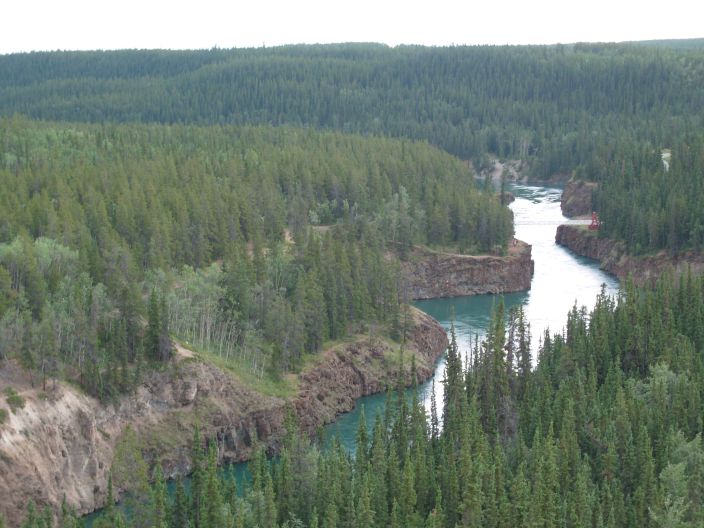
Canyon rapids, view to the South from the parking lot 2-3 km North of the foot bridge (far distance).
Clouds are grey all around us for the past two hours and some have rain streaks. We see lightning and hear the thunder. This, on a three-hour mountain bike trip around the scenic canyon rapids, a bottle neck for water transport during the late 19th century gold rush. Near the end of the trip, at the historic SS Klondike paddle boat, the down poor starts.

Canyon rapids, view to the South from the parking lot 2-3 km
North of the foot bridge (far distance).
What to do when you only have an afternoon in Whitehorse during a warm (25 C) summer afternoon.
Kayaking down the fast flowing Yukon River did not seem attractive as the water is very cold and you get wet but this seems very popular among the backpackers.
The canoe place on the Yukon River also has mountain bikes and, as an alternative, they suggested a 15 km trip past the salmon ladder to the canyon rapids, the latter a famous portage place during the late 19th century gold rush.
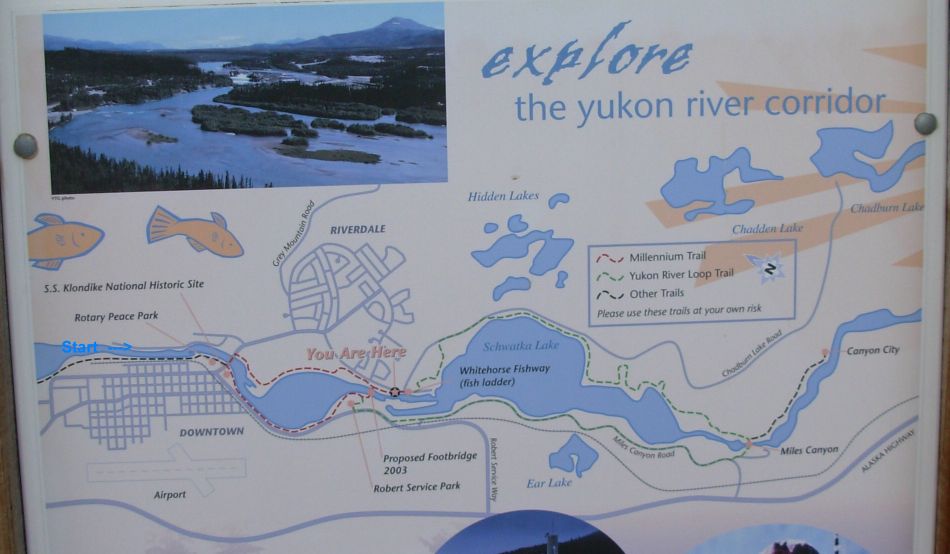
Route to the canyon rapids
Whitehorse in the Yukon is now a prime tourist destination during the summer months. Main attractions are the 19th century gold rush [1][2][3], the Alaska Highway and natural North with wide views and sparse inhabitants.
With endless forests, several mountain ranges, good infrastructure and average temperature of 20 Celsius in July, it is also a paradise for hikers in real nature. The only draw-backs are the numerous mosquitoes and the risk of meeting an unfriendly grizzly bear.
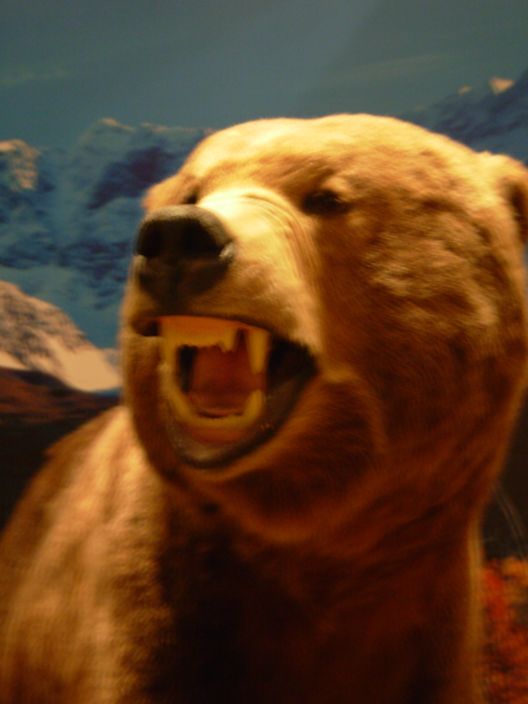
Grizzle Bear in the museum
Most tourists are older Americans, Canadians and Germans. Most Americans and Canadians come by boat to Skagway, the Southern tip of Alaska and drive up to Whitehorse (only 100 km). They continue along the Alaska Highway to Dawson City and Klondike (..km). Some even carry on to Alaska and very few to Inuvik, along the Dempster Highway, 800 km gravel. Germans take a two-weekly charter plane from Frankfurt. Backpackers and hikers come by plane and are a small minority, many staying in the Beez and Neez backpackers.
We cycle South along the West Bank of the river that widens past a bridge.
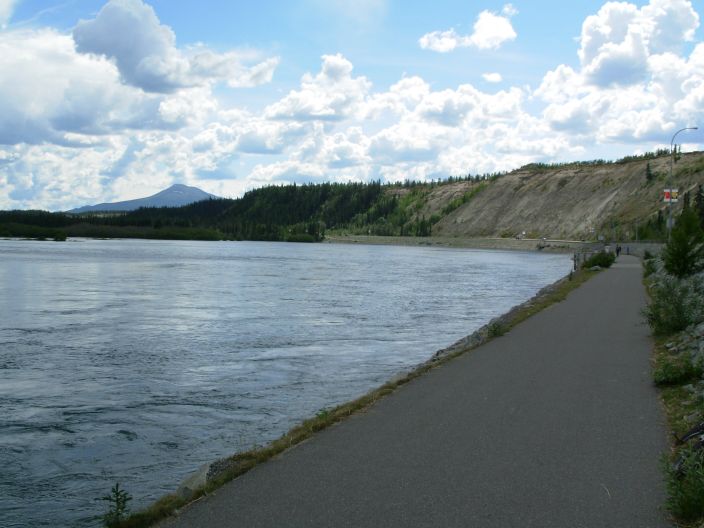
Yukon River pas the first bridge, West bank.
We pass the SS Klondike on the right side. After 2 km there is a camping and a foot bridge across the Yukon to the salmon ladder below the hydro-electric dam to enable the salmon to cross the dam.
With some 200 m and vertical difference of 20 m it is claimed to be the largest in the world. The first rain shower starts and we shelter inside the visitors center. This has an aquarium for counting passing salmon, that swim up the Yukon River from the Bering Sea, a distance of 3000 km which takes 2 months.
See e.g.: http://www.yukonenergy.ca/services/facilities/fishway/
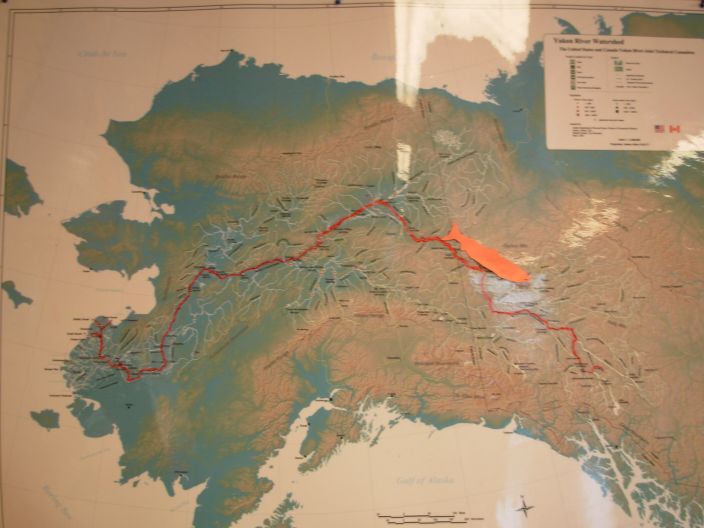
Travel of the salmon to Whitehorse from the Bering Sea.
The trail past the dam is washed out, even for hikers, and we take a detour using a wide gravel road up a steep hill. At the top, a rough trail takes us back to the river and continues but it is much easier to stay on the dirt road for some 6 km till the pick nick area. From here a trail runs on the rim of the basalt lava canyon to the foot bridge. There are impressive views at the hexagonal basalt pillars.

Canyon rapids and the basalt pillars, view North from the foot
bridge.
So far the ride on the East bank was rough and with no marks unclear. We used the river for our bearings.
Going back on the West side is much faster as there is a good tarmac road. I look at the dark-grey clouds with rain streaks all around us with occasional lighting and thunder, and try to speed up the return 7 km.
We pass sea-planes for tourist tours, owned and flown by old-timer pilots, weathered older man with long grey beards and checkered shirts.
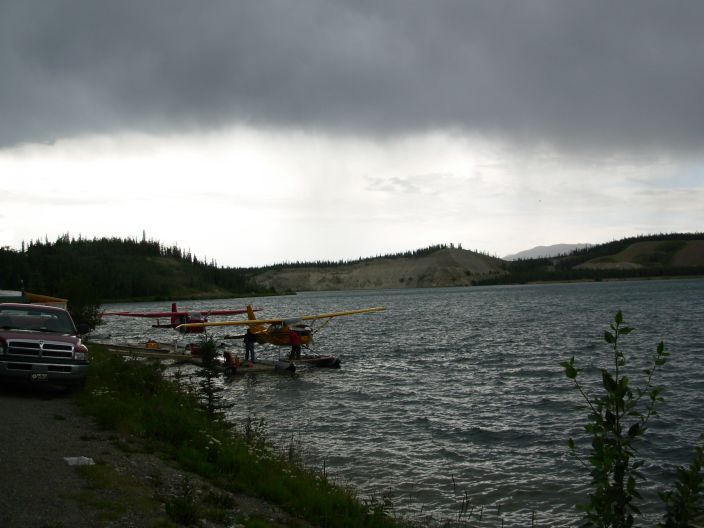
Sea planes on the Yukon River.
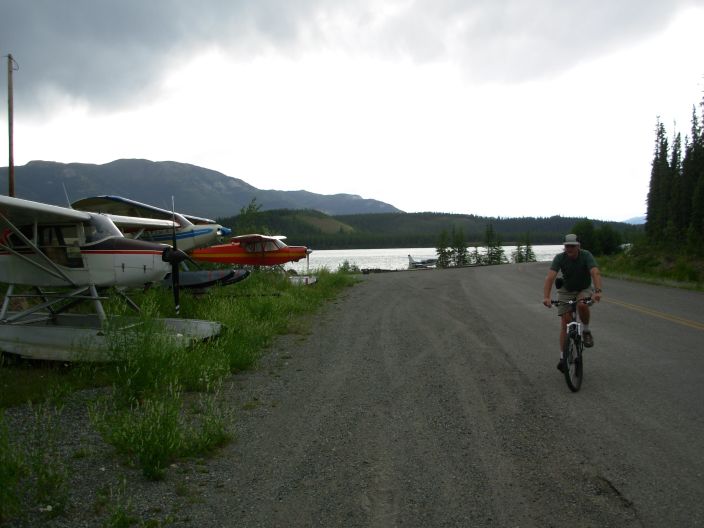
Sea Planes, with Ian on the bike.
Past the camping place the rain starts slowly.
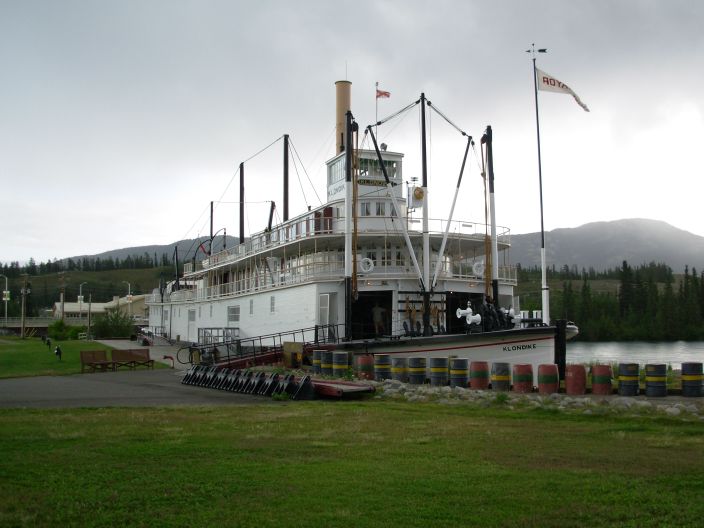
SS Klondike
At the SS Klondike we take the last tour of the day. Just inside, the rain downpour starts and the heavy rain continues for 20 minutes. The SS Klondike is a paddle boat steamer servicing the 450 km Whitehorse - Dawson City route from 1900 to 1950. The trip down stream took only 1.5 days but 4 days going upstream.
Linda, the Parks Canada guide, gives us an enthusiastic lecture of the history of the SS Klondike.
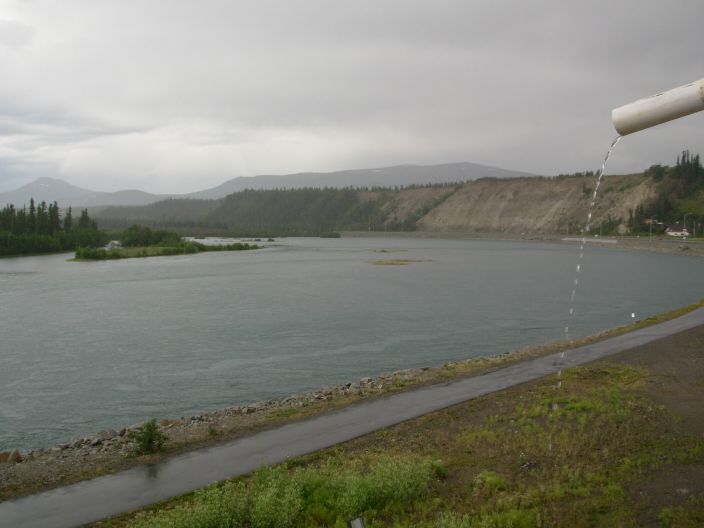
SS Klondike, view at the Yukon River, during downpour.
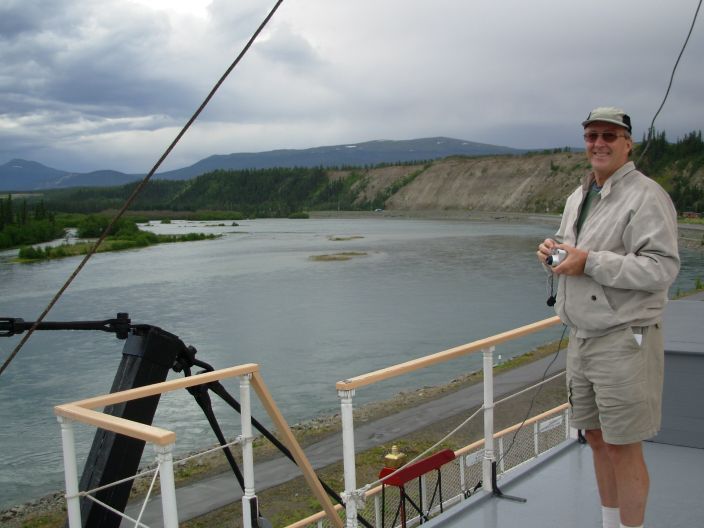
Ian on the SS Klondike, view South at the Yukon River.
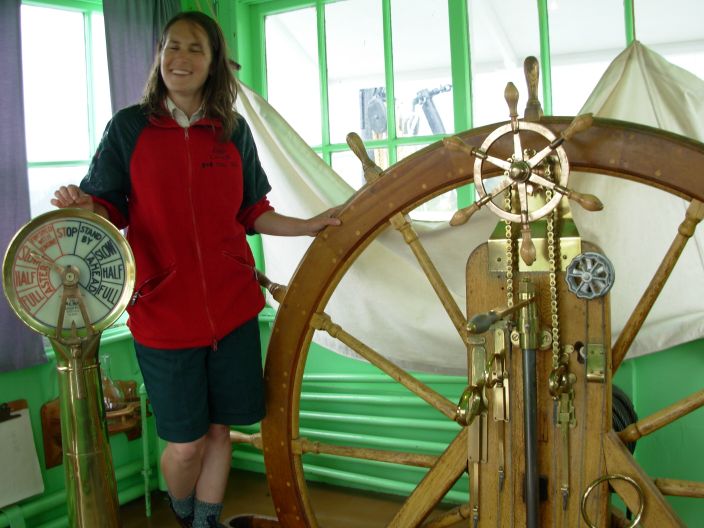
Linda, the Parks Canada guide on the SS Klondike.
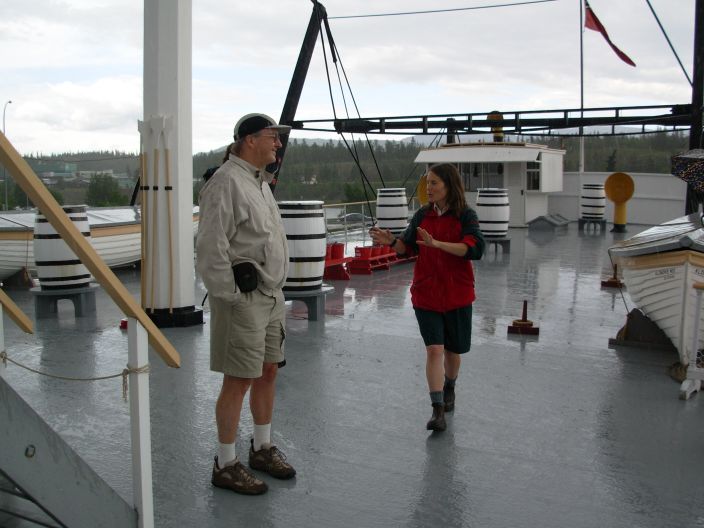
Linda, the Parks Canada guide on the SS Klondike, and Ian.
The local museum has stuffed animals, e.g. grizzly bear
and wolferine,
the history of the native people or “First Nations” and
the late 19th century gold rush[1][2][3]. Impressive. The museum has a replica of Sam McGee's cabin Only one afternoon in Whitehorse.
Amazing how much you can see.
If you have more time, you could walk
the canyon tour, a 6-7 hour trip. Cycling is 2-3 hours, depending how
long you stop at the numerous history boards.
Jean on the SS Klondike.
Museum
Epilogue
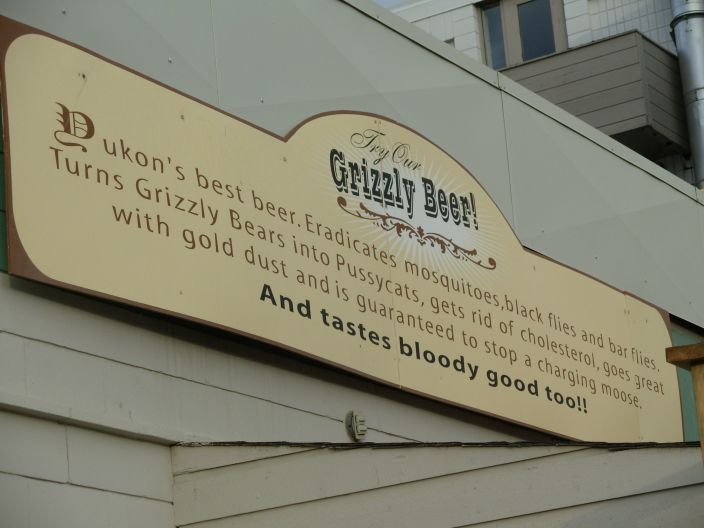
Grizzle "Beer"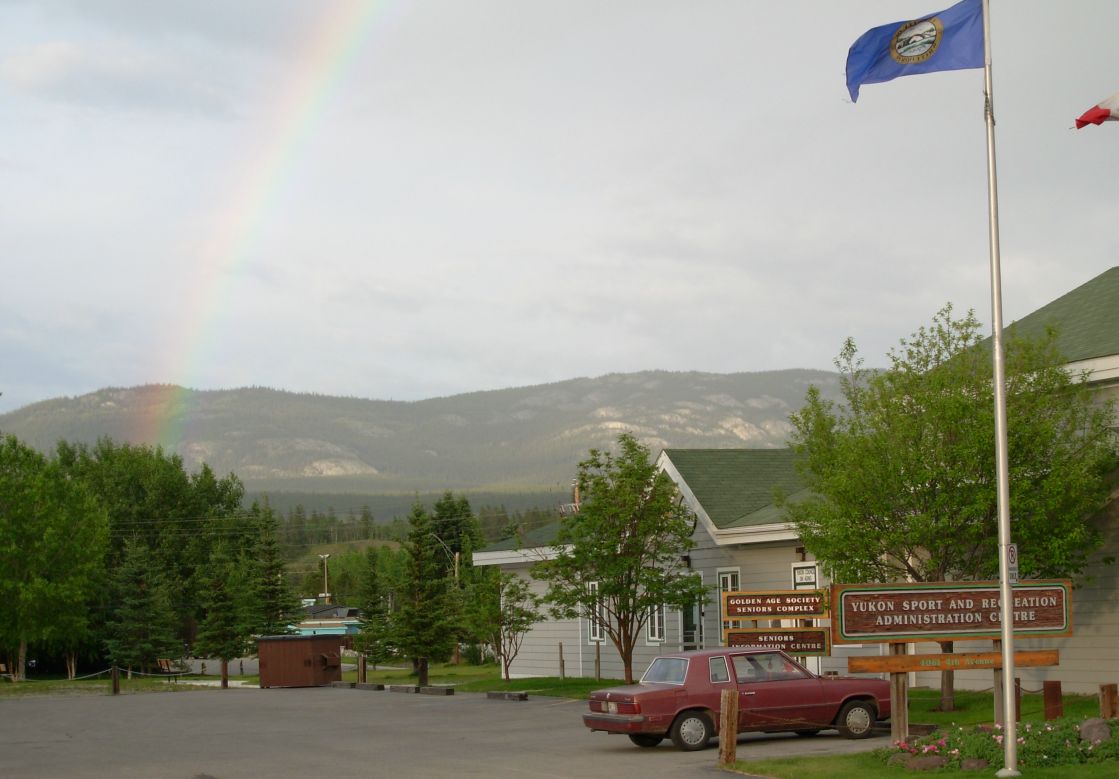
Golden Age Home, an alternative for Florida?
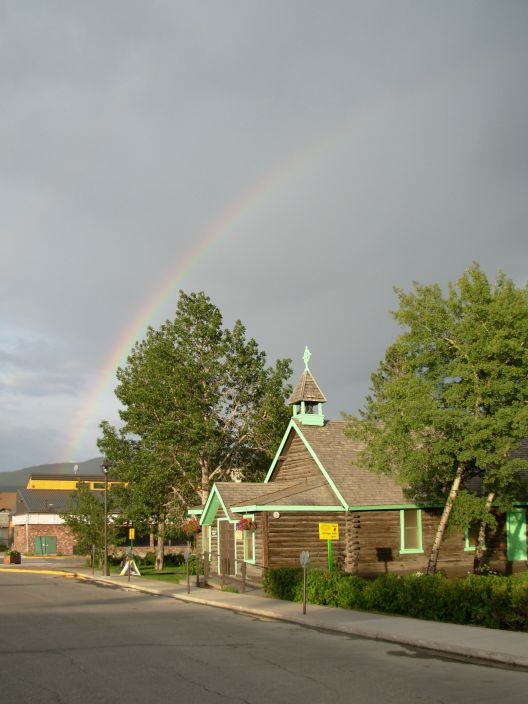
Old log cabin church, with a rainbow.
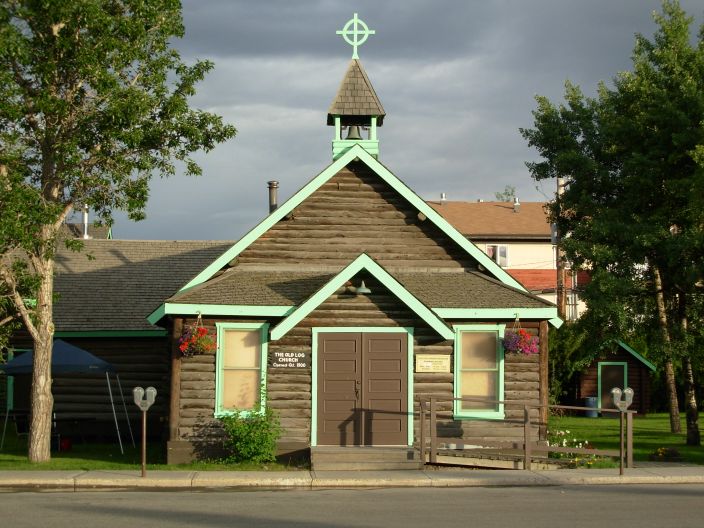
Old church, front.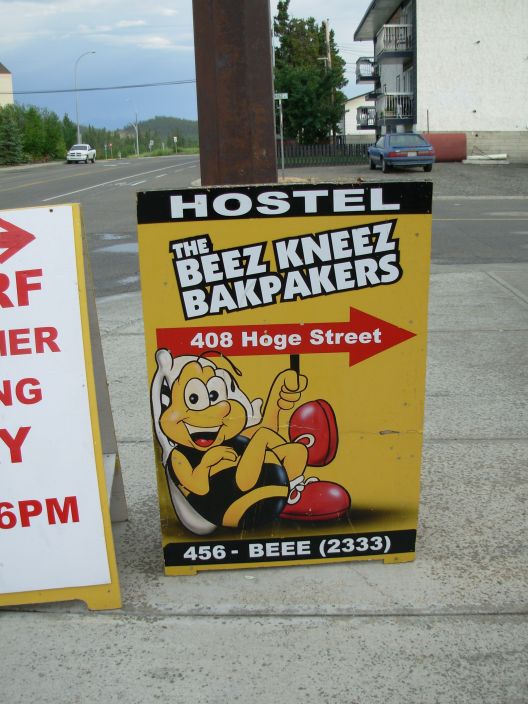
Bees and Kneez backpackers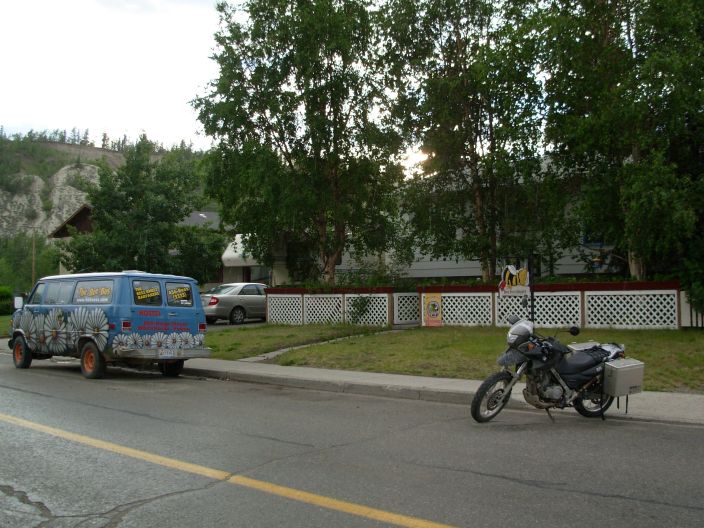
Bees and Kneez backpackers